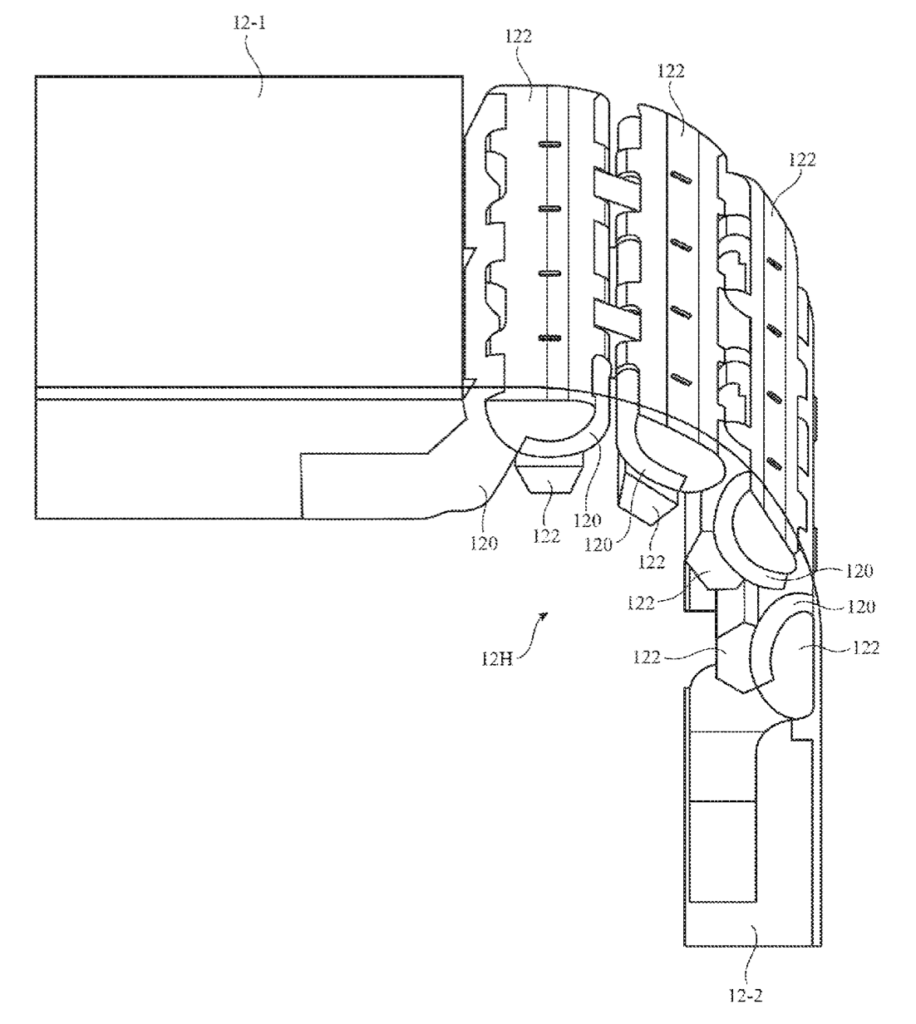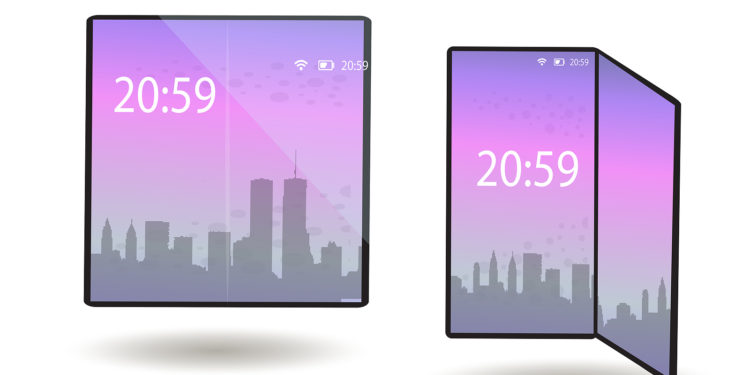Apple is working on a foldable iPhone – that much is certain. Whether the product will ever be released is, of course, another story. But now a patent has surfaced that reveals further details about the folding mechanism.
Apple's work on a foldable iPhone hasn't become known through leaks, but primarily thanks to numerous patents. Of course, this doesn't mean the device will actually be released, although various leakers have claimed that it will. Be that as it may, the patents offer a good insight into Apple's world of ideas. The patent titled "Electronic devices with foldable, expandable displays" was recently published. What's special about it is that it contains numerous details about possible hinge structures.
Foldable iPhone: Hinge structures can contain different elements
The first illustration in the patent, first filed in February 2020, shows a foldable device bent at a right angle. Notably, the illustration appears to show a new multi-link hinge structure with more than just one joint. This is just one such potential hinge being explored by Apple. The patent text suggests that hinge structures may include "gear teeth, belts, and/or other structures for synchronizing motion" and may also include "elements that move relative to each other when bent." These moving elements may compromise rods and links with opposing curved bearing surfaces that include stop surfaces that "prevent excessive rotation of the rods and links relative to each other." These connecting links could rotate about a pivot point that lies within a display without the actual hinge structure "living within the thickness of the display."
Apple Patent: Display technology not only intended for iPhone

The patent also explains other expandable or extendable displays, noting that a device with "housing structures that support folding, sliding, scrolling, and/or other behavior" could provide more screen space for users in a compact size. In addition, the patent runs through a few possibilities, such as a hinge structure that could prevent undue display stress during folding and unfolding, including specific hinge types, stress minimization components, stop surfaces, and friction to control the force applied to the hinge. Apple isn't limiting the display technology to the iPhone, either. The company notes in the patent that the foldable or expandable device could be applied to a whole range of different device types, including wristbands, laptops, eyeglasses, lenses, or devices in vehicles. Depicting the device as a smartphone is just one example, according to the description.
Foldable display: Patent describes materials
Much of the patent describes the type of materials such a device could be made from, the type of electronic circuitry that would power it, and the types of sensors, buttons, and other components. Apple files numerous patents almost weekly, so they are not a reliable indicator of the company's actual plans. They are interesting, however, and could end up being just an idea. (Photo by Amelie11 / Bigstockphoto)





